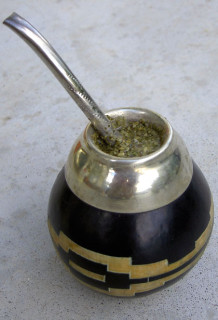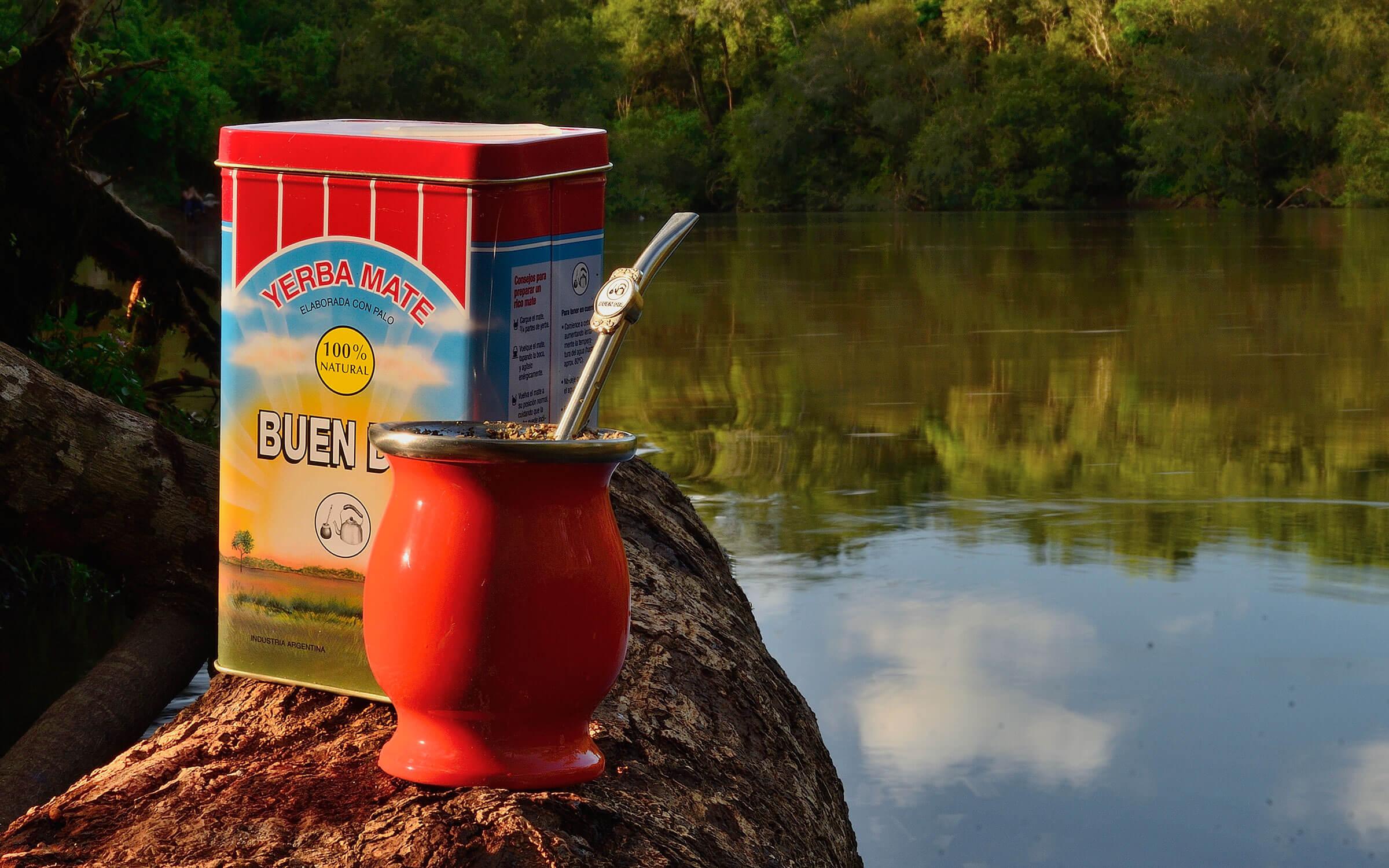![]() More than a drink, it’s a tradition, as important to Argentina as mint tea is to Morocco and wine is to Burgundy. Mate (pronounced mah-tay), a sort of South American tea, has been consumed since time immemorial by South America’s Guaraní natives.
More than a drink, it’s a tradition, as important to Argentina as mint tea is to Morocco and wine is to Burgundy. Mate (pronounced mah-tay), a sort of South American tea, has been consumed since time immemorial by South America’s Guaraní natives.

In the campo (field), the gaucho (an Argentine cattleman) starts and finishes his day with yerba mate (pronounced “sherba mah-tay”). A kind of holly, the plant used in the tea (Ilex paraguariensis) belongs to the Aquifoliaceous family and contains one percent mateina, the equivalent of caffeine, and is considered to be a stimulant.
Preparing Mate
The gaucho uses a mate (a hollow, dried squash) and a bombilla (a metal straw), and will generally prepare it as follows.
1. Fill the mate about two-thirds full with the yerba mate.
2. Cover the opening with your palm, then shake the mate to catch the lightest of the yerba dust on your hand.
3. Tilt the mate so that the yerba accumulates on one side.
4. Pour in a little hot (not boiling) water on the empty side and let the yerba absorb the water. Then, add a little more.
5. Next, place the bombilla filter into the empty side and fill with hot water.


